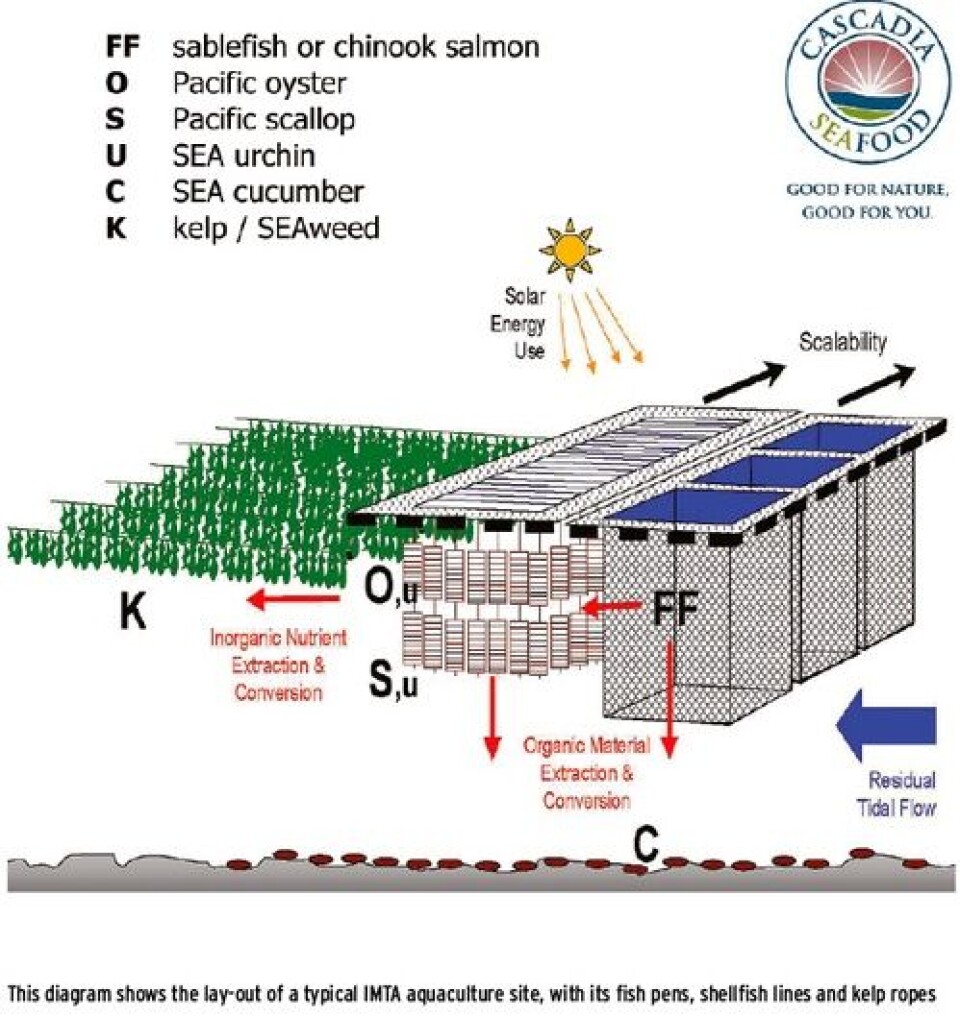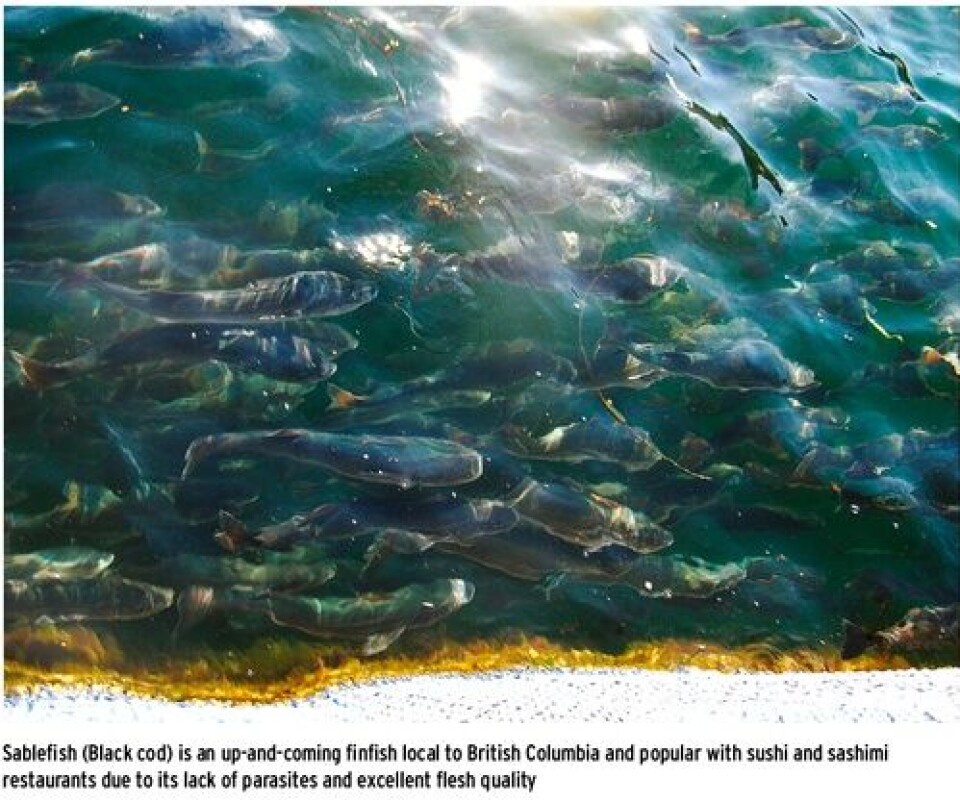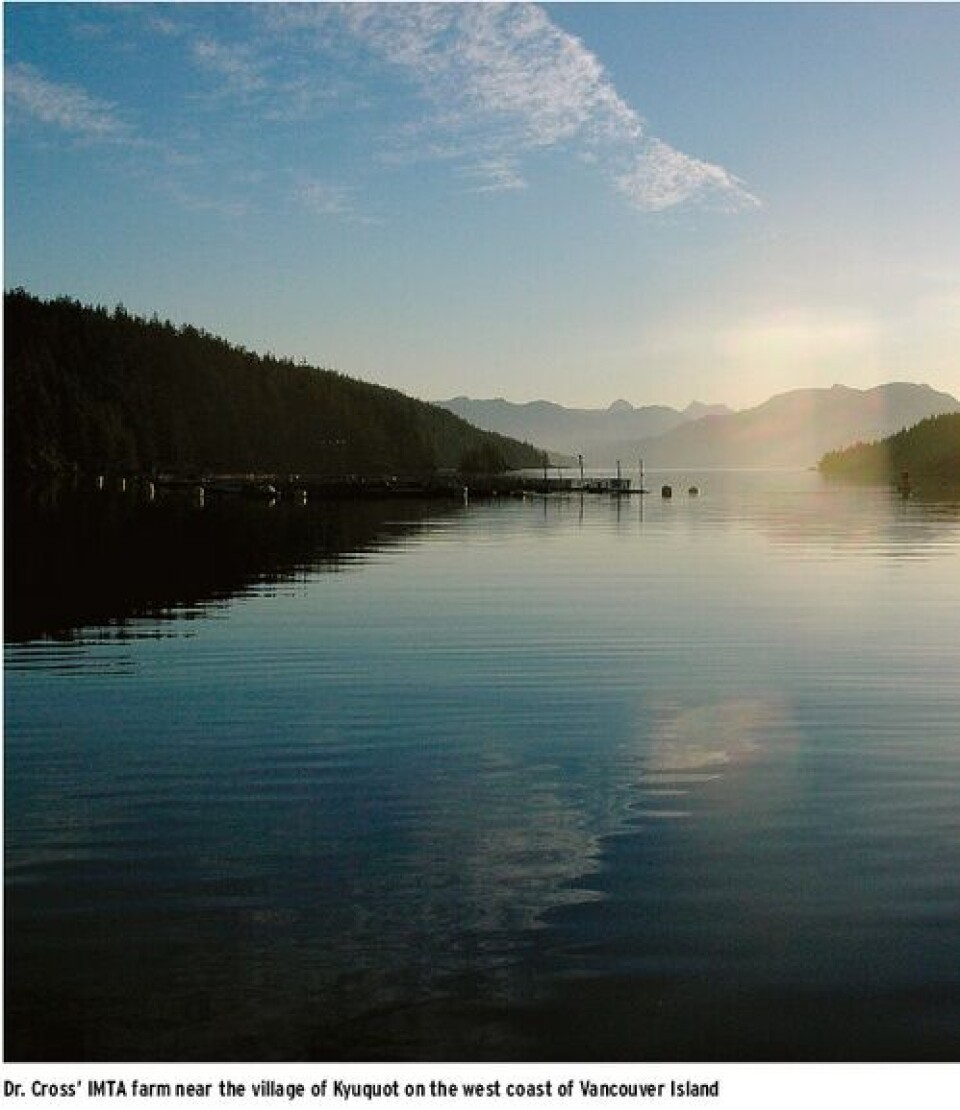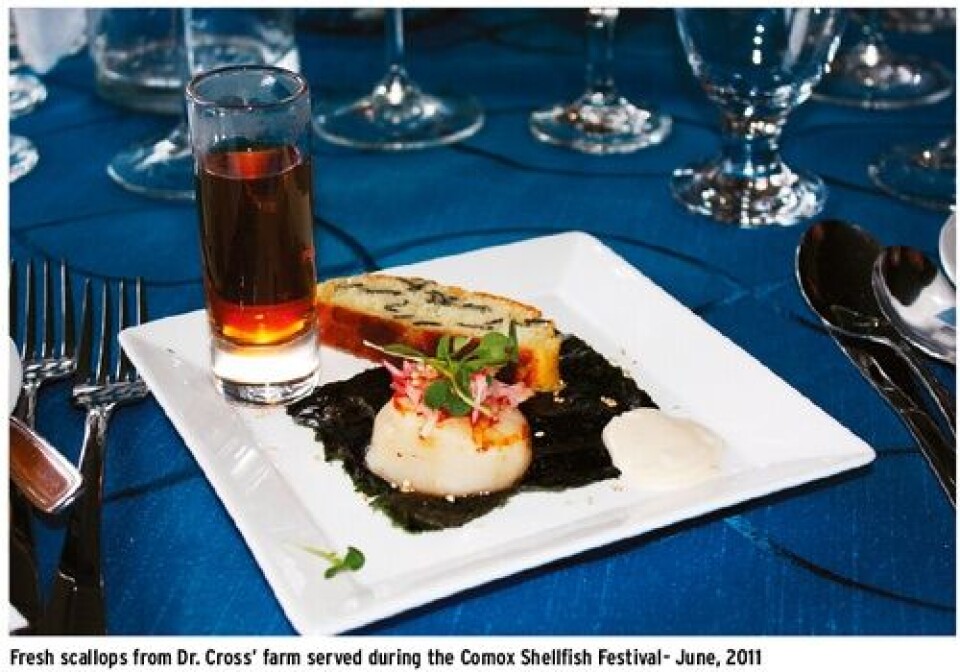IMTA in Canada – Research or Reality?
By Stephen F. Cross, Ph.D.
About the Author: Based on the Canadian west coast (British Columbia), Dr. Stephen Cross is a Natural Sciences and Engineering Research Council of Canada (NSERC) Industrial Research Chair in Sustainable Aquaculture at the Centre for Applied Research Technology and Innovation at North Island College (Campbell River) and an Associate Professor and Director of the Coastal Aquaculture Research and Training (CART) Network at the University of Victoria. In addition, he is the Founder and CEO of the SEA Vision Group of companies and holds the first commercial licenses for coastal IMTA in western Canada.

What is IMTA? Proposed over 10 years ago at a government-academic meeting in eastern Canada, the phrase Integrated Multi-Trophic Aquaculture, or IMTA, was considered the best descriptor for a new aquatic food production approach that was based primarily on ecological design criteria. Although also considered a “polyculture”, or multi-species approach, the science-based descriptor for IMTA suggests that the design necessarily includes species that are selected from different, yet complementary trophic levels, and not simply represent an assemblage of more than one culture species as may be the case for a system defined by the historical polyculture phrase.
The intent of IMTA is to increase the feed conversion efficiency of fed aquaculture systems (e.g., salmon, shrimp, etc.) by capturing and utilizing the organic and inorganic wastes that result from such systems by other, extractive species. In essence, IMTA systems comprise a fed component (such as fish) as well as a variety of other non-fed species, selected from various trophic levels, that are placed in such a manner so as to effectively Intercept, Extract, and Convert the fed species wastes into secondary seafood products. The selection of species is based primarily on two criteria – ecological function (role within the system) and economic value. The need to balance extractive/conversion capability, and hence the functionality of the selected species combination, with economic metrics (marketability and profitability) is the key challenge with an envisioned commercial IMTA approach.

Release of wastes from a fed component, such as fish, will generate three distinct waste streams. Settleable Organic wastes are represented by heavier material (such as fish feces) that will fall primarily directly below the fish containment structures. Suspended Organic wastes include the smaller and hence lighter fractions of these fish excretions and these wastes are typically retained in suspension and dispersed downstream with tidal activity. The third stream includes the Dissolved Inorganic fraction, including dissolved nitrogenous (nutrient) wastes.
Design of an effective IMTA system requires the addition of at least one species within each of these three waste streams … species that will intercept, extract and convert those available wastes into the economically valuable products represented by the selected extractive species. Dissolved nutrients are addressed using seaweeds or kelps. The fine particulates can be filtered from the water column using any number of shellfish species, e.g., oysters, mussels, and/or scallops. The settleable organic solids can be intercepted in the mid-water (through appropriately placed structures containing grazing species) or on the seafloor beneath and immediately adjacent to the fish cages … invertebrates such as echinoderms (sea cucumbers, sea urchins) or annelid worms can capitalize on these wastes. Each of the selected species, while performing a distinct ecological function within the IMTA system design, is also of economic value. In a commercially viable IMTA operation the choice of extractive species will realistically consider economic aspects ahead of extractive efficiency. For example, a region that has a higher demand for scallops than mussels would most likely select the former as a filtration species over the latter if prices were higher and markets secure.
In addition to the individual species performance (extraction/conversion) characteristics, the efficiency of an IMTA system design will also rely upon site characteristics (oceanographic, bathymetric), species stocking densities, and system configuration and orientation. A “good” IMTA site will need to reflect the water quality and physical oceanographic conditions of the suite of species cultured within the system … a significant commercialization challenge in that optimal conditions for one species (e.g., a salmon) will not be the same as that for the others (e.g., an oysters or for seaweeds). Water flow (velocity), will determine how long organic and inorganic wastes will reside adjacent to the source and hence be available for uptake by the positioned extractive species. The placement and alignment of the various system components will be determined by the direction of flows, and of course the quantity and extent of the extractive components will ultimately determine the total potential update of these wastes.

Can Commercial IMTA become a Reality? IMTA has often been envisioned as an approach that would be able to address the waste issues associated with fish farming. However, given the previous description of the inherent challenges of IMTA farm site optimization, it is clear that this approach may not be readily adaptable to existing fish farm operations. Sites selected only for salmon, for example, will not likely be well-suited to the addition of a suite of extractive species that would allow transition of the operation to an IMTA production model. Furthermore, the design, configuration and orientation of fish farm infrastructure did not consider commercial production of anything other than the salmon … integration of additional species would most certainly result in operational conflict issues, and even if mitigated would not likely provide an optimal multi-species production operation.
But more important than the challenges associated with compatible biophysical conditions, finfish farming (as currently practiced) is generally production driven. Farms are configured and operated to maximize production and companies are vertically integrated to provide economic efficiencies from “egg to plate”. Fish farm operations have stated clearly that they are not interested in the added complexity that is inherent with a multi-species production system, and given the incompatibility with their current production facilities nor would these companies be willing to commit to the expense of re-configuration and re-tooling of their farms to facilitate such a transition. It is therefore highly unlikely that the near future will see fish farms with newly added extractive aquaculture.
So beyond the research and its well-published “potential”, will IMTA be realized on a commercial scale? The short answer is yes. Commercialization of IMTA will occur, but it will develop independent of the existing farm operations … it will most likely become an entirely new production sector. In this way all of the issues associated with converting fish farms to IMTA will be eliminated, allowing for new and specialized system design/engineering, appropriate siting, and ‘balance’ of the species co-cultured. There is a public recognition that this approach is “greener” than the production-driven farm models, and as such the initial commercialization efforts for IMTA are projected to be market-driven, satisfying the growing eco-ethical consumer demand and filling a niche that includes that of organic seafood production.
On the Canadian west coast the SEA Vision Group (SVG) has developed a Sustainable Ecological Aquaculture (SEAfood) System approach that includes not only an ecological (IMTA) design to mitigate the organic/inorganic waste issues of fed aquaculture, but integrates energy alternatives (solar, ocean thermal) to address its carbon foot-print, and supports Canadian Certified Organic practices to address other real/perceived issues associated with fish farming (e.g., antibiotic use, chemical applications, stocking densities, etc.).

The SEA Vision Group research began its IMTA research in 2000, which since then has stimulated the design and engineering of a new commercial SEAfood System … one that supports the integration of multiple species and facilitates operational efficiency within tis configuration. Licensed for 11 species, the SVG uses sablefish (black cod) as its fed species, and a variety of shellfish (mussels, scallops, oysters, cockles) and echinoderms (urchins and sea cucumbers) for its organic extractive components. Nori (Porhyra) and sugar kelp (Saccharina latissima) are employed as inorganic extractive sea plants.
Envisioned as a market-driven, organic approach, the SEAfood System is rrady for full commercialization (see the corporate web site at: http://www.SEAvisiongroup.ca). Interest in the SEAfood System, and IMTA in general, is growing and the efforts of the SVG in western Canada was recently highlighted in the June/2014 issues of National Geographic: http://www.nationalgeographic.com/foodfeatures/aquaculture/























































